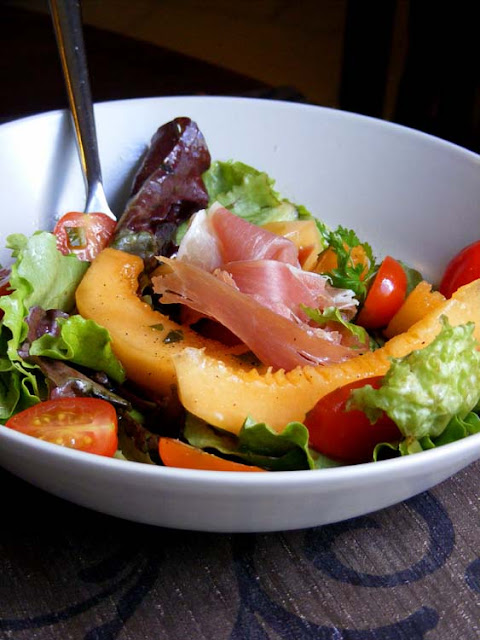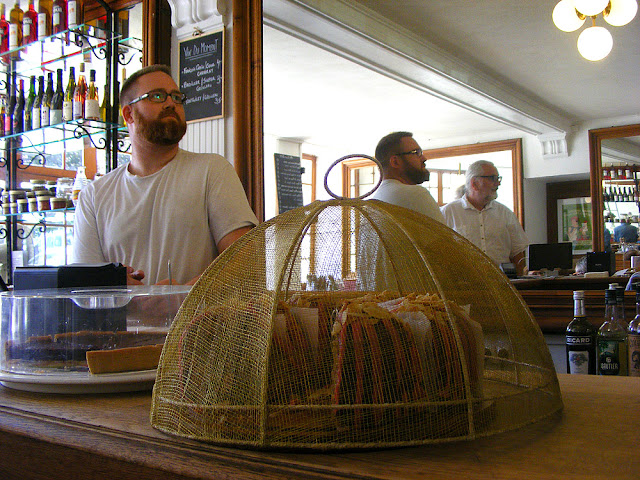We are at the height of summer fruit in the market in Preuilly.
Sandie has three varieties of organic figs from her orchard Fruits O'Kalm on the edge of town.
Surprisingly, the green ones are the most 'figgy'. The apples behind are from a very early cropping tree that is an unknown but very good variety.
Blood peaches. Expect to see these on the menu at l'Image, the newly reopened restaurant on the market place in Preuilly. I happen to know that Chef Chris bought 3kg of them.
This year there is a bumper plum crop. These yellow plums are an unknown variety. I served them roasted, with a dollop of mascarpone.
Damsons.
Sylvain has more organic tomatoes than he knows what to do with from his market garden Les jardins vergers de la Petite Rabaudiere just outside of Preuilly. He has resorted to sending a tonne of them to a processor in Le Blanc.
Organic heritage tomatoes at the farm shop at La Petite Rabaudiere.
All the produce shown is organic and grown on a farm just outside Preuilly. You can purchase the veggies from the farm shop on Monday from 16:00 to 19:00 or at the market in Preuilly on Thursday mornings. The fruit can be purchased at the market in Preuilly on Saturday mornings.
Link to the Facebook page of Les Jardins Vergers de la Petite Rabaudiere: https://www.facebook.com/profile.php?id=100064620014397.


















































